We love good coffee, and believe making the best cup is all about knowledge.
Find coffee from thirdeye coffee roasters in person.
We are here to learn how you like your brew.
Answer some questions about your coffee habits and we will work out the perfect beans for you.
Based on your answers, we will show you what brew is right for you
plus a couple more options if you’re feeling adventurous!
We will let you know what quantity you should get and how often.
All you have to do is hit the go button, sit back and wait for your beans to arrive at your door.
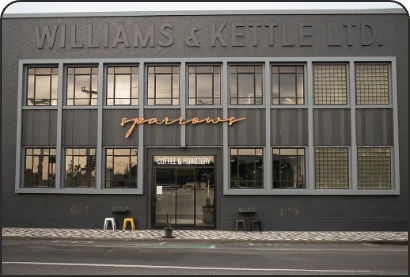
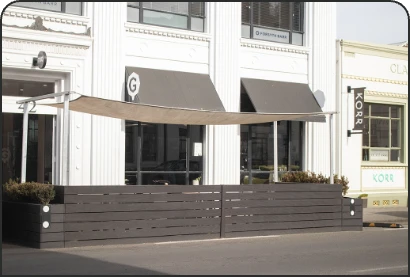
Experience our curated selection of coffee, two vibrant single origins, our speciality house blend, and probably the best decaf you’ll ever try, all roasted here in New Zealand.
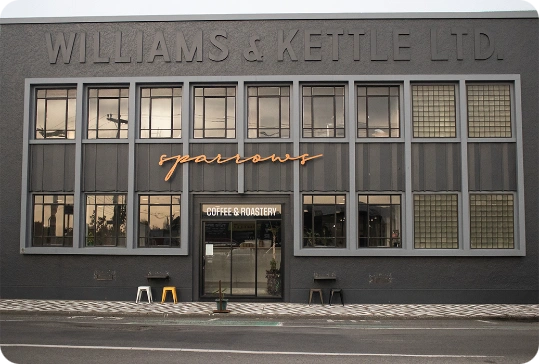
1 Austin Street, Onekawa
Open Hours:
Monday – Friday, 7:30am – 2pm
Saturday & Sunday, 8:30am – 2pm
The flagship space, Napier’s OG espresso bar. Nestled in an iconic Art Deco listed building that catches the morning sun, the perfect place to stop for a coffee, or get one to go if you’re on the run.
Banter is always 10/10 and on Fridays the beer is cold and the chat is bottomless.
42 Tennyson Street, Napier South
Open Hours:
Monday – Friday, 7:30am – 2pm
Saturday & Sunday, 8:30am – 2pm
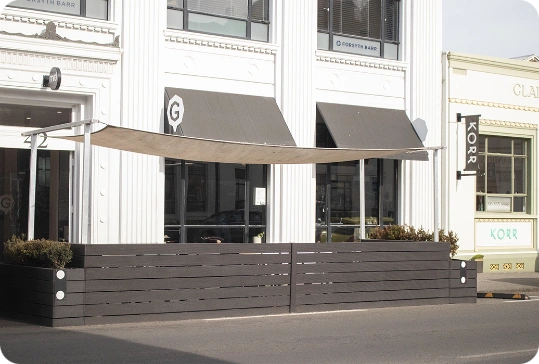
We have created this tool to help you find the perfect brew for you. Follow through the steps to determine your coffee needs.
Have a coffee related question? Fill out the form below and someone will be in touch.
Our journey to thirdeye coffee roasters began in 2016, when we opened our flagship espresso bar, Georgia on Tennyson, in the quaint little town of Napier, New Zealand.
The concept of an “espresso bar”; where our focus is entirely on the quality of our coffees, and we serve only minimal cabinet food, and no brekkie at all(!?) was a foreign one to the Napierite locals. Slowly but surely, after many bemused morning conversations about Eggs Bene, we began to win over the hearts and minds of some of the locals who appreciated the opportunity to drink better coffee without the distraction of a meal.
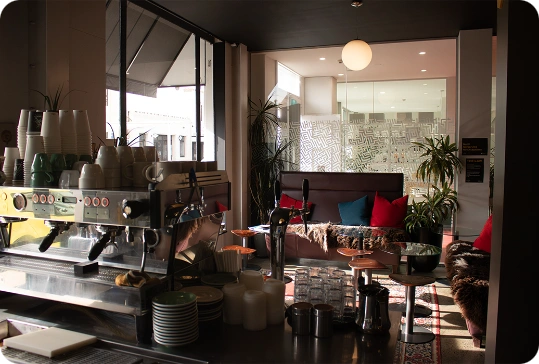
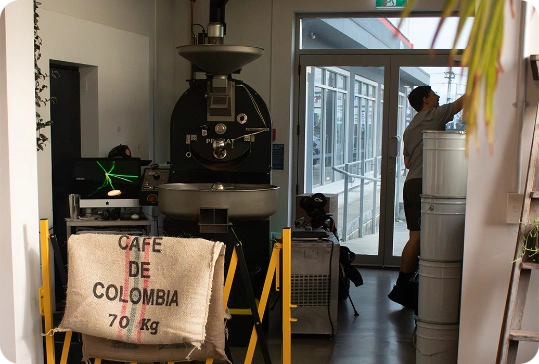
After three years of trading, and serving great coffee made from someone else’s beans, we decided we wanted to move up the supply chain; we would roast better coffee.
We bought our own coffee roaster from Chicago in the United States, and brought it into New Zealand, we searched local spaces available to install our new roasting equipment, and found our Austin Street location, we forged relationships with international coffee bean growers and suppliers in Brazil, Columbia, Honduras, and many other countries, so that we could have touchpoints across the entire process from bean to brew.
With that first 10kg of beans roasted in our new coffee roaster, in our new roastery location, thirdeye coffee roasters was truly born. We knew we could absolutely create coffee without compromise.
Where to, from there? We opened a second espresso bar, Sparrows, attached to the thirdeye coffee roastery – which has given us a whole new cohort of locals to meet and win over. We supply our beans to a number of local coffee houses across Hawke’s Bay. And now, we’re making our foray into direct to consumer bean supply. You, too, can now drink better coffee at home.
Better coffee fuelled by knowledge.
Coffee is the only thing we take seriously. We enjoy sourcing rare and interesting coffees. Each new shipment of beans is its own vintage; and each batch is roasted very specifically to get the absolute best, most nuanced result from those beans.

No two batches of thirdeye coffee roasters coffee will ever be exactly the same, and that’s the way we want it. From the seeds of the coffee bush, to the coffee cherries and their beans, to the first and second cracks of the roasting process, to the brewing process that delivers you that final cup of thirdeye coffee roasters coffee; you know that you are consuming better coffee, coffee that has been made without compromise.
We’re much better looking in person. Come and meet us over a cup of thirdeye coffee roasters at either Georgia on Tennyson or Sparrows.
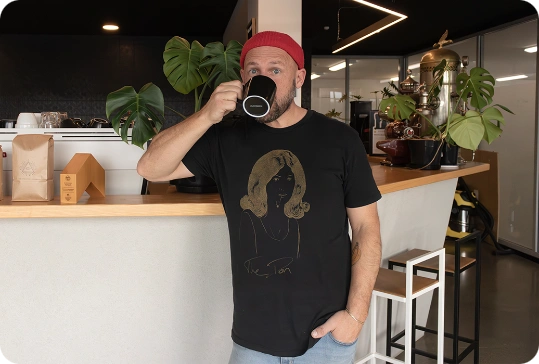
These factors each play a big role in how your coffee tastes once you finally get to drink it. Here are our instructions to ensure you can always brew the perfect cup at home:
Espresso is the Caffeine Daddy; with a bean to water ratio of 1:2 a well pulled espresso shot is what’s going to give you the mightiest boost morning, noon or night.
The strength behind an espresso shot lends itself to being taken straight or mixed with milk, however you like it best.
We love espresso coffee for its super high intensity flavour, and because it showcases the skills of our baristas; there’s nowhere to hide in a long black.
To pull a New Zealand double (~60ml espresso at the end):
You need to clean and dry your portafilter in between shots to maintain consistency if you’re serving more than one espresso at a time.
A Flat White is the pavlova of the coffee world. The iconic antipodean drink gained popularity among both Kiwi and Aussie caffeine connoisseurs in the 1980’s. Officially, whether it was Wellington, Sydney or Melbourne that the Flat White was first created has been lost to the annals of history. Unofficially, we all know who really came up with it first.
A brewing method of many names; caffettiera, moka pot, or stovetop espresso. Whatever you call it, they’ll all make your coffee the same way; by using steam to pressurise water and forcing it up, through your coffee grounds and into the repository on top.
We love a stovetop espresso for their ease of use, affordability, and production of a final brew that sits perfectly between an espresso shot and a mug of plunger coffee.
For ~180ml of brewed coffee:
A stovetop espresso’s volume is measured by Italian demitasse (30ml) cups. If you’re someone who takes their hit out of a mug, you might find that you measure three (or more!) Italians.
Stovetop espresso makers first made it down-under with Italian migrants after WWII.
You know you have one of these lying around. We all do! Like the stovetop espresso the plunger is an apparatus of many names; cafetière (like the stovetop espresso’s caffettiera, but French), French press, or plunger.
We love a plunger coffee…
For ~1L of brewed coffee:
A plunger is probably the most common brewing method in New Zealand homes.
You can also use a plunger to brew tea, or strain (particularly shellfish) stock… Just don’t come crying to us if your next coffee tastes like fish.
Proponents of the Chemex desire clarity of coffee without compromise. We respect that. Because of its unique filter paper; a Chemex produces a brew so clear, it’s almost like tea to look at.
For ~500ml of brewed coffee:
You need to use a coarser grind for a Chemex pour over than you would use for a Hario V60 pour over, even though the brew method is largely the same. Chemex filters are made using a bonded paper method, which slows down the extraction process, a coarser grind of coffee balances out the impact of the slower extraction by decreasing the available surface area of each coffee grind and preventing over extraction.
It is important to note that the tight weave of the Chemex filter also works to hold back some of the coffee beans’ natural oils; decreasing crema and sacrificing mouth feel. The clarity of that final brew, though, is unsurpassable.
The Hario V60 is your gateway into special coffee brewing. We love inspiring new caffeine aficionados, and the Hario V60 is a great place to start.
For ~230ml of brewed coffee with a Hario V60 “01”:
Japanese company; Hario has been developing coffee brewing apparatus since 1980, the Hario V60 has been available since 2004. The “V 60” refers to the 60 degree angle of the ‘V’ shaped sides of the dripper.
The Hario V60 is available in three different sizes; “01” (for 1 cup) “02” (for 1–4 cups) “03” (for 1–6 cups)
An AeroPress is great for the caffeinated mad scientist.
With an AeroPress, you can experiment with almost every recommended coffee making parameter. You can; change the size of the grind, throw the recommended coffee:water ratio out the window (if you must), lengthen or shorten the steep time… the forgiving nature of the AeroPress as a brew method will (almost always) let you get away with it.
For ~200ml of brewed coffee:
The AeroPress was first developed in 2004 by Alan Adler because he wanted to enjoy a less acidic, less bitter-tasting brew. Adler released the first iteration of the AeroPress into the wild in 2005 and the rest, as they say, is history.
These days, you can even compete to be the AeroPress World Champion – if you think you’ve got what it takes
(Note: There are many ways to brew and AeroPress coffee, this is the industry standard.)
Lorem ipsum dolor sit amet, consectetur adipiscing elit, sed do eiusmod tempor incididunt ut labore et dolore magna aliqua. Ut enim ad minim veniam, quis nostrud exercitation ullamco laboris nisi ut aliquip ex ea commodo consequat. Duis aute irure dolor in reprehenderit in voluptate velit esse cillum dolore eu fugiat nulla pariatur. Excepteur sint occaecat cupidatat non proident, sunt in culpa qui officia deserunt mollit anim id est laborum.
Copyright © 2024 thirdeye coffee roasters
Website designed by FizzyPop | fizzypop.nz